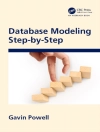As Microsoft’s Dynamics 365 gains ground and businesses adopt this tool, the demand for internal resources who need to understand how to support and maintain it increases. Administering, Configuring, and Maintaining Microsoft Dynamics 365 in the Cloud addresses the needs of those who support Dynamics, discussing numerous real-world scenarios that businesses must deal with when implementing Dynamics 365. Scenarios are presented with simple, fully functional walkthroughs so that non-developers can follow the instructions and learn how to address any issues that need to be resolved.
The variety of concepts discussed in this book include how to:
- Quickly set up and configure users, teams, business units, and security
- Navigate through the system and present data in easy to access dashboards and SSRS reports
- Import data and export data, and migrate data between systems
- Create customized Business Process Flows, Workflows, and Business Rules
- Customize your Dynamics 365 instance with new entities, fields, and Java Script
-
Deploy and manage plugins and solutions
Daftar Isi
Chapter 1: Set Up and Configuration 1
Setting Up Dynamics 365 Online 1
Basic Navigation of D365 7
Advanced Find 10
System Settings and Auditing 14
Auto-Numbering 22
Summary 22
Chapter 2: Security 23
Business Units 23
Security Roles 25
Users 30
Teams 34
Field Level Security 36
Summary 40
Chapter 3: Customizations 41
Adding Fields 41
Publishing Your Changes 47
Option Sets 49
Lookups 50
Relationships 54
Creating New Entities 57
Modifying the Navigation (Site Map Revisions) 62
IFrames 65
Java Script 67
Creating a Personal View 77
Customizing a View 80
Creating an Editable View 84
Summary 90
Chapter 4: Reporting 91
Using the Report Wizard 92
Using Business Intelligence Development Studio (BIDS) 100
Creating a Report Project 102
System Report Settings 112
Summary 113
Chapter 5: Importing Data 115
Using the CRM Import Wizard 115
Reviewing Data Import Status 121
Deleting Imported Data 123
Using Data Import Maps 126
Using Scribe to Import Data 128
Data Integration 134
Summary 135
Chapter 6: Business Process Flows and Business Rules 137
Business Process Flows 137
Business Rules 148
Summary 153
Chapter 7: Workflows and Other Processes 155
Accessing Workflows 155
Creating a Basic Workflow 157
Monitoring Workflow Status 164
On-Demand Workflows 165
Adding Logic to a Workflow 167
Creating Custom Workflow Activities 170
Dialogs 175
Actions 180
Summary 182
Chapter 8: Solutions 183
Creating a Solution 183
Exporting a Solution 188
Importing a Solution 192
Solutions and Versioning 195
Summary 196
Chapter 9: Templates 197
Creating a Global Email Template 197
Creating an Entity-Specific Email Template 200
Using an Email Template 202
Summary 206
Setting Your Landing Page 207
Customizing an Existing Dashboard 208
Creating a New Chart 213
Creating a New Dashboard 215
Summary 220
Chapter 11: Plugins and Workflow Activities 221
Developing a Plugin 221
Developing a Workflow Activity 229
Deploying Plugins and Workflow Activities 236
Administering Assemblies 241
Summary 242
Chapter 12: Ribbons 243
Using the Ribbon Workbench 244
Summary 250
Index 251
Tentang Penulis
Mark Beckner is a technical consultant specializing in business strategy and enterprise application integration. In addition to running his own firm, Inotek Consulting Group, LLC, he advises developers on how to launch their own independent practices. Beckner has been in the industry for over 16 years, and formed Inotek Consulting Group in 2007. Under his leadership, the firm delivers innovative solutions to large corporations and small businesses, and their projects range in nature from mobile application development to complete integration solutions. He has authored numerous technical books including Upgrading and Migrating to Biz Talk Server 2016, Biz Talk 2013 EDI for Health Care, and Microsoft Dynamics CRM API Development, and has spoken at a number of venues, including Microsoft Tech Ed.












